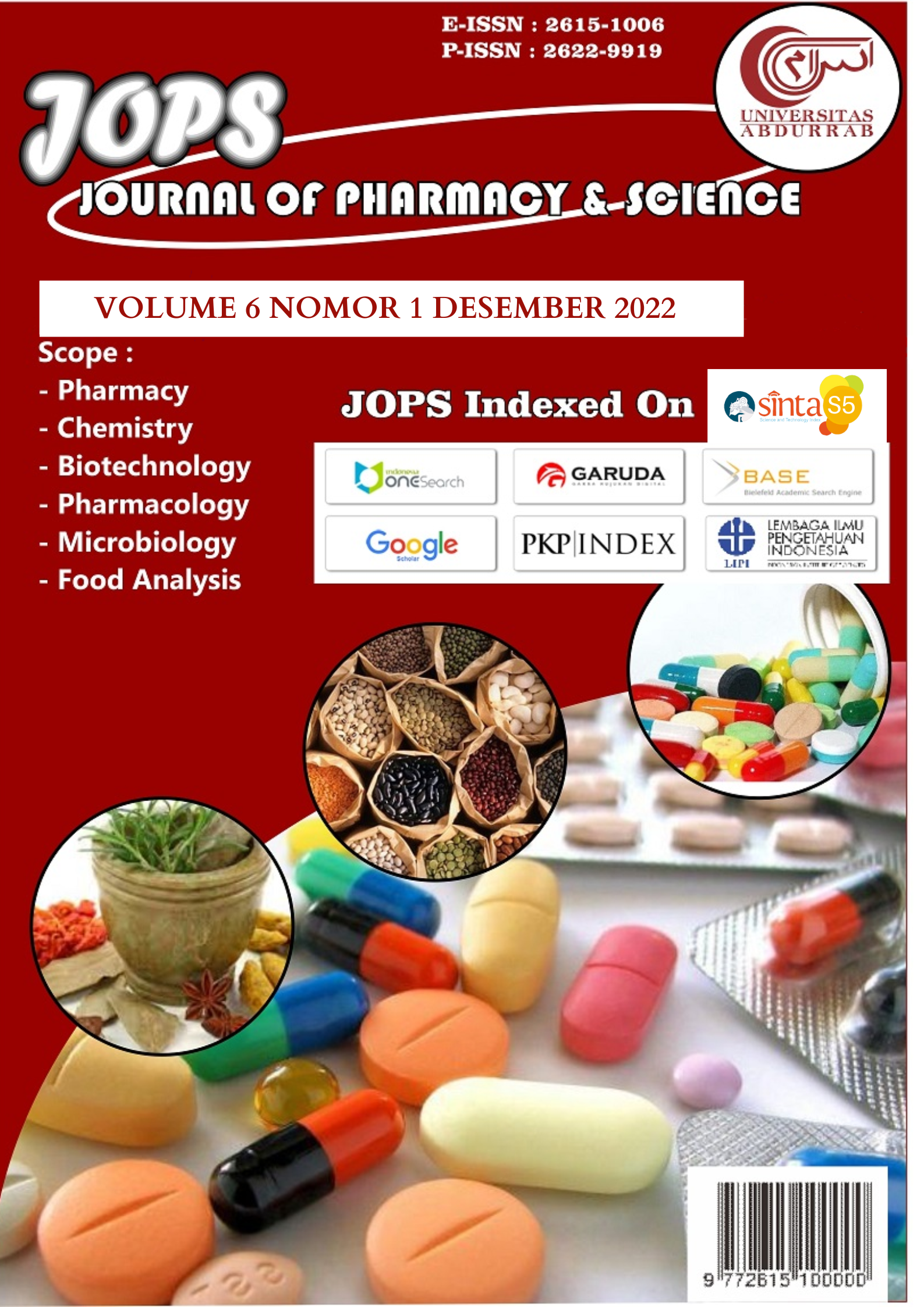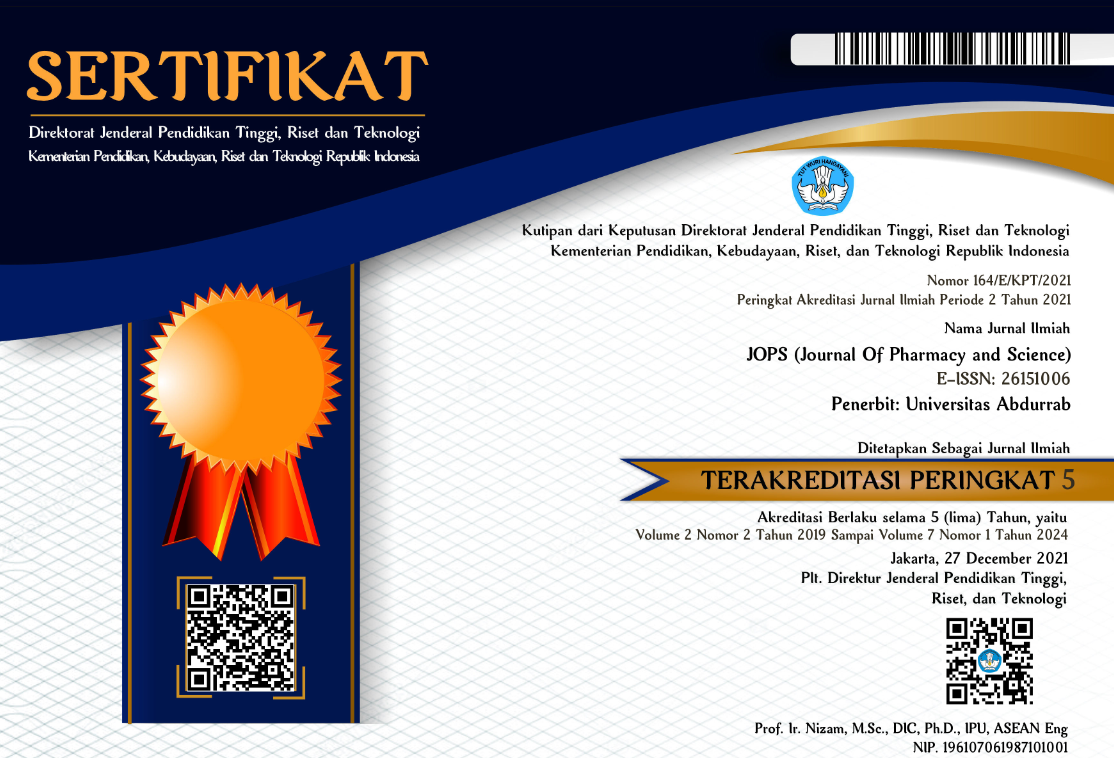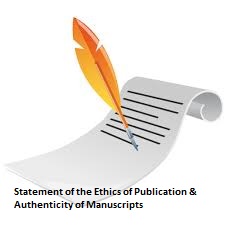Anti-Inflammatory Activity of Cayenne Pepper (Capsicum frutescens L.) Gel on White Rats (Rattus norvegicus)
Abstract
Cayenne pepper (Capsicum frutescens L.) is a plant that has many benefits, one of which is as an anti-inflammatory. The anti-inflammatory effect of cayenne pepper was tested on white rats in the form of a gel. Two gel formulas were used with different concentrations of propylene glycol as additive, 25% and 30%, respectively. White rats were grouped into 4 groups, negative control group (gel base), positive control group (Voltaren® Emulgel), gel formula 1 group (enhancer 25%), and gel formula 2 (enhancer 30%). Albumen was induced on the backs of white rats then samples were given. Skinfold thickness measurements were taken every 1 hour for 6 hours. The data obtained in the form of skin thickness values (mm). The % Inflammation Inhibition (% PI) was calculated for each sample. Formula 1 and Formula 2 gave %PI of 32.58 ± 1.80 and 40.75 ± 5.71, respectively. Both formulas had an anti-inflammatory effect against edema on the back of rats although not better than Voltaren® Emulgel. Based on One Way ANOVA test, Formula 2 has a better anti-inflammatory effect than Formula 1. LSD test results show that %PI Formula 2 is similar to %PI Voltaren® Emulgel with a significance value of 0.117 (>0.05).
References
Dorland (2020) ‘Kamus Saku Kedokteran Dorland’. Singapore: Elsevier Ltd.
Gomes, A. et al. (2008) ‘Molecular Mechanisms of Anti-Inflammatory Activity Mediated by Flavonoids’, Current Medicinal Chemistry, 15(16), pp. 1586–1605. doi: 10.2174/092986708784911579.
Jolayemi, A. T. and Ojewole, J. A. O. (2013) ‘Comparative Anti-Inflammatory Properties of Capsaicin and Ethyl-Acetate Extract of Capsicum frutescens Linn [Solanaceae] in Rats’, African Health Sciences, 13(2), pp. 357–361.
Maliszewska, J. and Tegowska, E. (2012) ‘Capsaicin as An Organophosphate Synergist Against Colorado Potato Beetle (Leptinotarsa decemlineata Say)’, Journal of Plant Protection Research, 52(1), pp. 28–34.
Saini, S., Dhiman, A. and Nanda, S. (2016) ‘Traditional Indian Medicinal Plants with Potential Wound Healing Activity: A Review’, International Journal of Pharmaceutical Sciences and Research, 7(5), pp. 1809–1819.
Thaib, T. (2002) Formulasi dan Uji Karakteristik Gel Ekstrak Etanol Buah Cabai Rawit (Capsicum frutescens L.) dengan Variasi Enhancer. Stikes Muhammadiyah Manado.
Zeyrek, F. Y. and Oguz, E. (2005) ‘In Vitro Activity of Capsaicin Against Helicobacter pylori’, Annals of Microbiology, 55(2), pp. 125–127.
Copyright (c) 2022 JOPS (Journal Of Pharmacy and Science)

This work is licensed under a Creative Commons Attribution-NonCommercial-ShareAlike 4.0 International License.
1. Copyright of all journal manuscripts is held by the JOPS (Journal Of Pharmacy and Science)
2. Formal legal provisions to access digital articles of electronic journal are subject to the provision of the Creative Commons Attribution-ShareAlike license (CC BY-NC-SA), which means that JOPS (Journal Of Pharmacy and Science) is rightful to keep, transfer media/format, manage in the form of databases, maintain, and publish articles.
3. Published manuscripts both printed and electronic are open access for educational, research, and library purposes. Additiponally, the editorial board is not responsible for any violations of copyright law.
licensed under a Creative Commons Attribution-ShareAlike 4.0 International License.
 PDF (Bahasa Indonesia)
PDF (Bahasa Indonesia)
 Abstract views: 268
Abstract views: 268
 downloads: 183
downloads: 183

 :
:

1.png)








